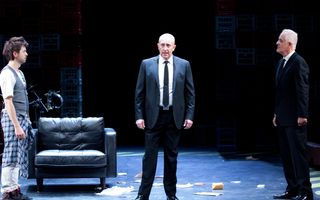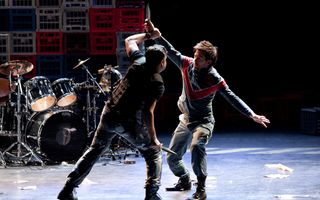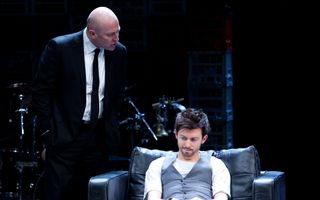 On Stage
On Stage
Did Shakespeare fall out with Falstaff?
Falstaff is still one of Shakespeare’s most enduring characters, one of his most brilliant inventions, and no doubt a crowd favourite among Elizabethan audiences. So popular in fact was the character of Falstaff that Shakespeare wrote him a ‘spin-off’! The charismatic “hill of flesh” (Act 2, Scene 3) was such a hit that Shakespeare paused writing the second part of Henry IV in order to quickly write The Merry Wives of Windsor, it appears, to enable Falstaff’s hasty return to the stage and cash in on his popularity. No doubt this also ensured bumper crowds for his third appearance when Henry IV Part 2 debuted later that same year. Itseems that at least some of The Lord Chamberlain’s Men were keen to see Falstaff return to the stagein Henry V. At the end of Henry IV Part 2, a dancer stands before the audience and in an epilogue promises that in the next part of the story “our humble author will continue the story, with Sir John in it” (Act 5, Scene 5). This is perhaps one of history’s earliest shameless attempts to use star power to spruik a sequel.
But clearly, Shakespeare had other ideas. One can only imagine the depth of disappointment felt in the pit when by Act 2, Scene 3, after no sign of everyone’s favourite “bed-presser”, Pistol brings news that Falstaff is dead. He is barely mourned - a very short scene describing his miserable demise alone in bed crying out for ale - and is mentioned again only very fleetingly. It seems clear that Shakespeare’s relationship with Falstaff, or perhaps his relationship with Will Kempe, the actor who more than likely portrayed Falstaff, took a turn for the worse. There is of course little hard evidence to support the theory, but there are clues in Shakespeare’s work that he had become tired with Kempe’s particular slapstick and ad-lib comic style, and wanted to go in a new direction with his clowns and fools. Clearly Kempe did not agree because in 1599 he sold his share in the Lord Chamberlain’s Men and parted ways with Shakespeare’s company.
Evidently Will Kempe enjoyed a great deal of celebrity during his time at the Globe and was confident that it was he, rather than Shakespeare’s plays, that kept the crowds returning. Kempe embarked on a number of attempts to elevate his notoriety – including a bizarre publicity stunt which saw him Morris dance all the way from London to Norwich (approximately 190km). Unfortunately for him he had grossly overestimated the extent of his personal appeal and he never again reached the dizzying heights of fame that he had achieved as Falstaff.
Who is the Real Rebel?
Shakespeare is renowned for changing history to suit his dramatic needs, but it seems that in this play he has made a genuine mistake. In Henry IV Part 1, Shakespeare follows Holinshed in suggesting that the Mortimer who has been captured by Glendower (and is later accused but Henry of being a traitor) has a strong claim to the throne through his descent from Lionel of Antwerp. The play would have us believe that King Henry has given an army to his main rival and someone who has a legitimate claim to the throne.
This was not the case, however. The Edmund Mortimer with a legitimate claim to the throne was in fact the nephew of the Edmund Mortimer captured in Wales. Historically, the younger of the two Edmunds (5th Earl of March) was by many considered the ‘rightful heir’, and while too young to be dangerous to King Henry, still posed a risk to his legitimacy. So the King held this young boy captive throughout his rein.
This mistake is repeated in Henry IV Part 2. The Archbishop of York, seeking to raise support for further rebellion, cites the advantage of having the legitimacy of Edmund Mortimer to ensure public approval. In the context of the play this makes sense. But historically, the true heir to the throne was locked away.





